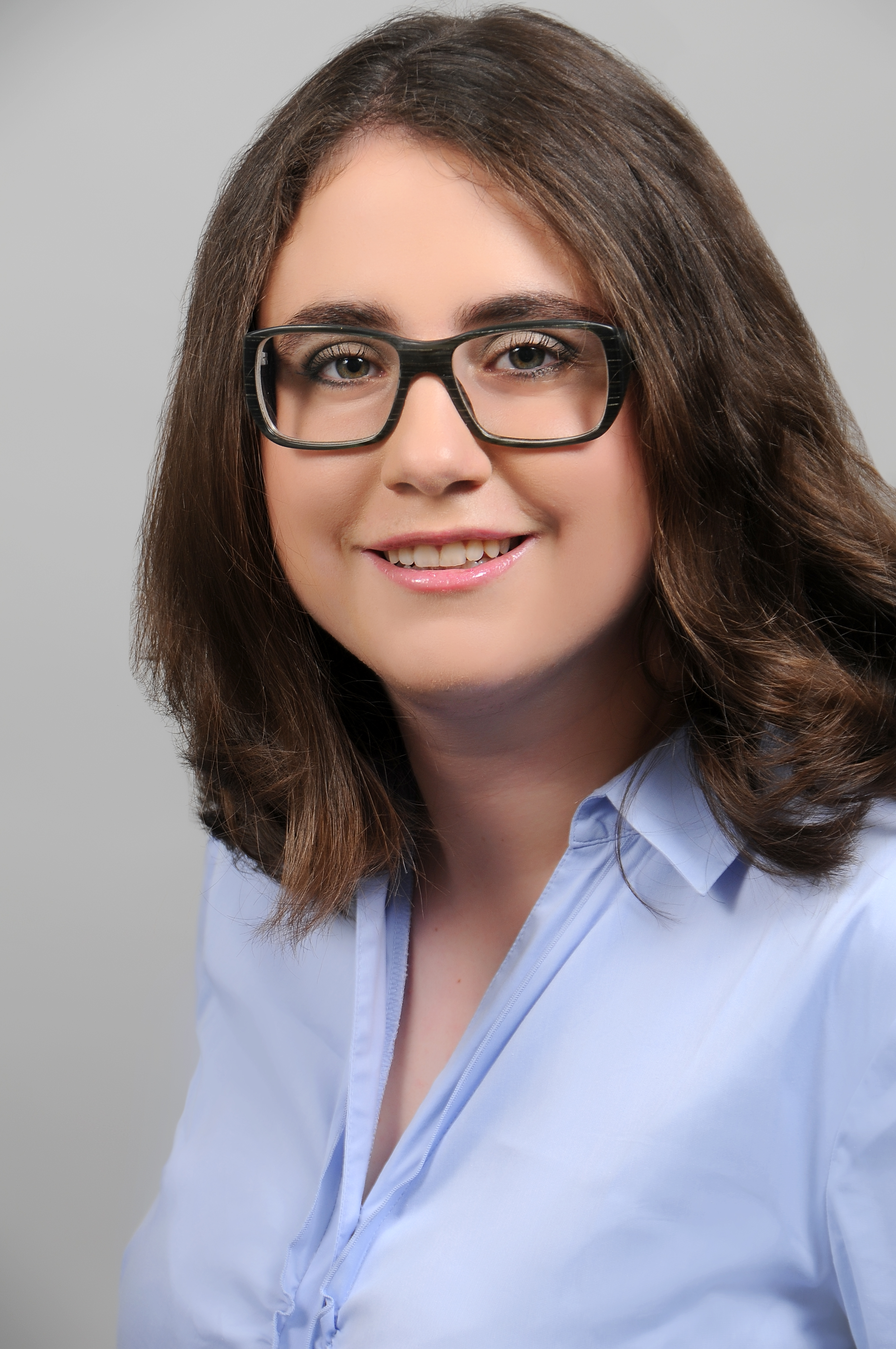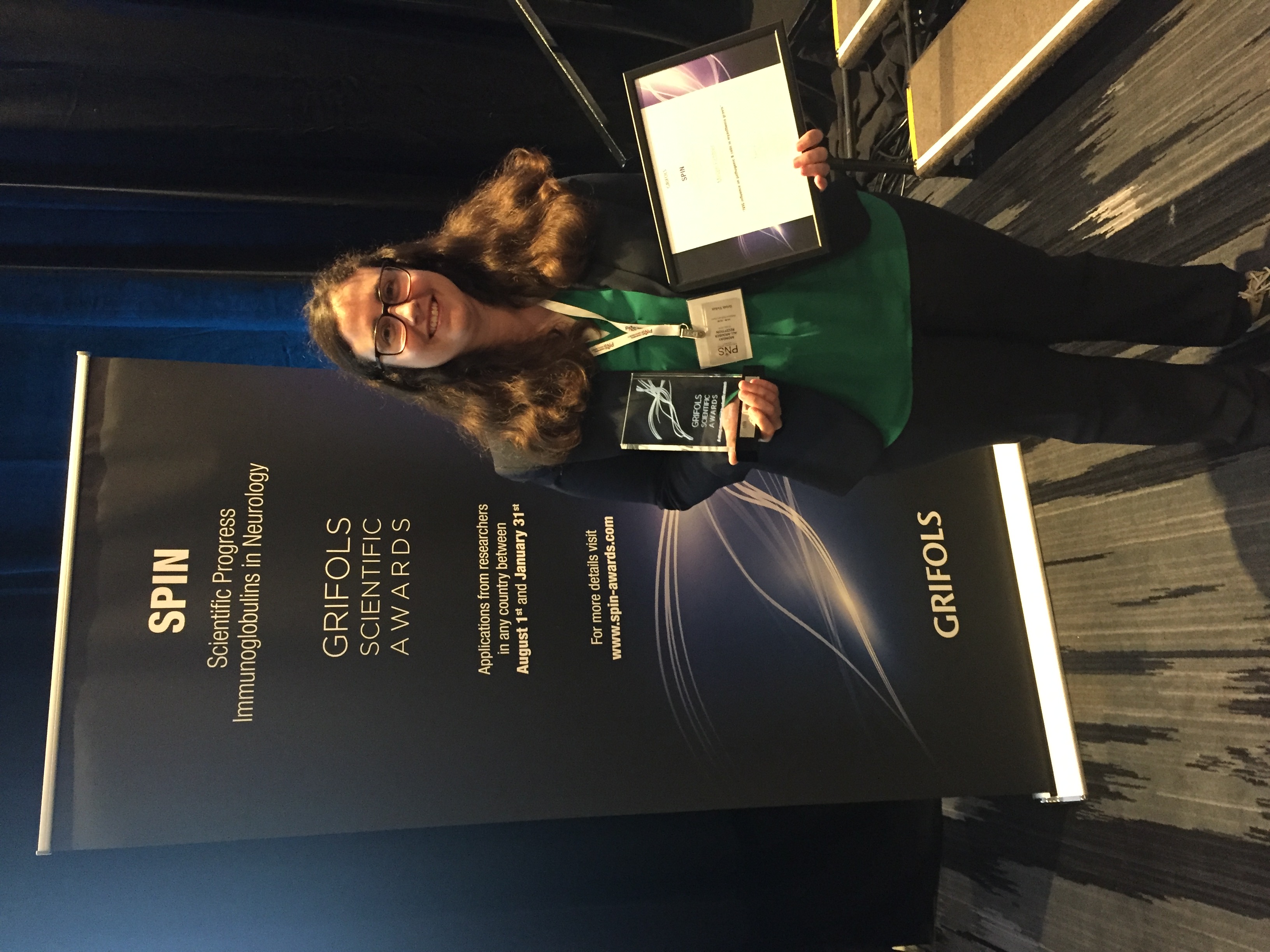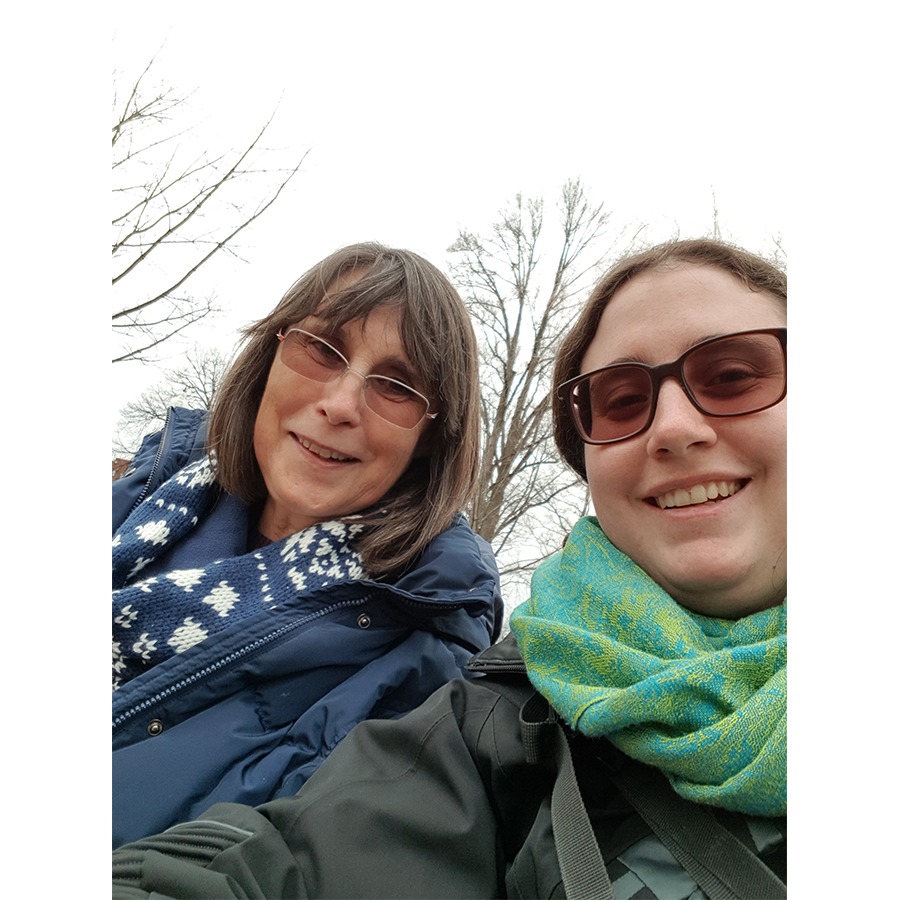“Been in America”: Interviews with German researchers in the USA and Canada

Miriam Fichtner
© Privat
(05/10/21) Medical scientist and neuroscientist Miriam Fichtner joined the Department of Neurology and Immunobiology at Yale University in New Haven, CT as a postdoc in February 2018 and has received funding as a DFG fellow since autumn 2019. As a member of Kevin O’Connor’s research group, she is looking to gain fresh insights into the autoimmune mechanisms of the nerve disease myasthenia gravis. In her interview with the DFG Office North America, she talked about her current research project and career goals, as well as subjects like Rafael Nadal’s forehand, beer vinegar and Elisabeth of Austria-Hungary – better known as Sisi.
Through its research fellowship program and the Walter Benjamin Program, the DFG supports junior scientists in their academic careers by funding an independent research project abroad and, since 2019, in Germany too. A large proportion of these fellowships are awarded in the USA, and to a somewhat lesser extent in Canada, reflecting the belief – still prevalent in the life sciences in particular – that for a career in research it is helpful to have “been in America.” In this series of talks, we aim to give you an impression of the range of DFG funding recipients. In this edition we take a look at who is behind funding number FI 2471.

Miriam Fichtner at the SPIN award ceremony
© Privat
DFG: Dr. Fichtner, many thanks for taking the time to talk to us. Since you achieved a grade in your school-leaving exams that was just below the top mark, I suppose you “had” to study medicine, is that right?
Miriam Fichtner (MF): First of all, thank you very much for giving me this opportunity to talk to you – and also a big thank you to the DFG for a fellowship that gives me the freedom to pursue my research project here at Yale. To answer your question: mathematics or physics would have been perfectly good options for me, too. In my last couple of years at school, I had mathematics and physics as my two advanced courses and a very inspiring teacher called Mr. Grün.
DFG: Was Mr. Grün one of your role models?
MF: Yes, you might say that. He was an excellent teacher who taught me physics in my last two years. I would also mention my Latin and religious studies teacher, Dr. Elbl. Her lessons were always very stimulating and varied.
My parents are role models for me, too. My father works as a physicist at the State Office for the Environment in Augsburg; I particularly admire his thoroughness and perseverance. For example, he didn’t start playing tennis until he was in his mid-forties and was so single-mindedly dedicated to improving his game that he even played in the Bavarian League for a while – going on with his team to win the title of Team of the Year in our region in 2019. In terms of science, he already impressed me considerably as a young child in his work on things like a completely anechoic chamber. My older sister always did everything first, so she was also a role model I emulated. My mother is a very inquisitive and open-minded person. She has a wide range of interests and has gathered an enormous amount of knowledge over the years. In addition to my mother, I should also mention her father: as a district forester, he passed on to me a love of nature along with a good deal of curiosity and a sense of duty.
My earliest experiments involved providing life support for our Christmas trees, which I often kept in water until April to see how long they would stay green. Some of the trees did actually sprout a little on the branches after a while, but it wasn’t really a successful project. Our cat loved to drink the water though – and she lived to be no less than 22 years old. As a child, I approached the investigation of fermentation processes somewhat more systematically – it was something I came across rather by chance in a forgotten glass of elderberry juice. My parents discovered what I was up to before the experiment was finished, so I had to promise not to distill any schnapps from the trial products.
DFG: And we haven’t even gotten to medicine yet.
MF: When my grandfather passed away suddenly, the sense of “wanting to know” initially was eclipsed by the idea of “wanting to help.” I took a paramedic course at school and wanted to become an emergency physician. During my studies in Munich, I then rediscovered research, so to speak, but this time my focus was on neurology and immunology. While I was doing my doctoral thesis, working at Professor Edgar Meinl’s laboratory at the Institute of Clinical Neuroimmunology at Ludwig Maximilian University of Munich (LMU), I realized I wanted to continue working in the field of translational research after graduation and focus on myasthenia gravis.
DFG: Myasthenia gravis is only known to experts.
MF: Yes, and the small number of patients who are affected by it. It’s a comparatively rare autoimmune disease that can be fatal in extreme cases due to malfunctions in the transmission of excitation between nerve and muscle. I came into contact with it at the LMU’s Friedrich Bauer Institute. It fascinates me because although we already have a fairly good idea of the structures the immune response is directed against, much less is known about how the disease develops, i.e. the immunopathogenesis. We’re currently working on this and we hope our findings will lead to an improved understanding of autoimmune disease in general, too.
DFG: Why is it important to be in the US for this, in particular at Kevin O'Connor’s lab?
MF: The Department of Neurology and Immunobiology at Yale University probably has the largest collection of cell material on this subject, along with two luminaries in the fields of neurology and immunology – David Halfer and Joseph Craft. Given this context, Kevin O'Connor’s lab is of course one of the world’s top places to be in my field – not just for myself from Germany but for other international early career researchers, too.
DFG: Where would you like your career to go from here?
MF: My DFG funding lasts for nearly one more year, which is great for my standing – my independence in the lab. The research is going extremely well: the publications required to prove a clearly above-average track record are in the pipeline or well underway, or they’ve already been published. So I’d like to apply for a position as a junior research group leader in the coming months, and I’ve already received inquiries from Germany. So in all likelihood I’ll be moving on to Germany to pursue one of the many promising paths available to the most talented early-career researchers. Nonetheless, I always bear in mind the words of an Augsburg-born poet I’m sure you’re familiar with, from his Ballade von der Unzulänglichkeit des menschlichen Strebens (“Song of the Insufficiency of Human Striving”).

Miriam Fichtner with her mother at Yale in New Haven
© Privat
DFG: But things have been going to plan so far?
MF: Not everything. When I went to Yale, my mother was with me for the first few days. Based on the information we gathered in advance, we thought Yale would be located in a pretty harbour town called New Haven. This was only partly correct – that really is the name of the town. But when we started looking for a nice café with a view of the sea, we found just about everything else except that – and my mother wanted to take me straight back to Aichach. She’s probably still more concerned about my well-being than about my academic career.
DFG: In future you plan to get involved in organizing, supervising and teaching research in addition to conducting research yourself. Have you gathered some experience in this?
MF: Yes, because it’s common in the labs for postdocs to provide guidance for postgraduates and other students and to structure and process the results they obtain. I also started mentoring disadvantaged students this year -- I currently have a very talented woman as a mentee who wants to study medicine. Essentially, my most important task is to occasionally boost her self-confidence and give her encouragement. It’s more difficult to find your way to a degree in medicine if you’re the first in your family and your social milieu to opt for this route. In Germany, it’s common to see a lack of confidence in women, here in the US this applies to women and minorities – and all the more in the combination of both. You can make a huge difference with just a little intervention.
DFG: You also mention another career in your CV, namely as a tennis player.
MF: Yes, but you shouldn’t take the concept of a “career” at face value here – tennis isn’t a discipline in which I really excel in the same way. I came to the sport by a somewhat circuitous route via karate and football, so I initially had considerable problems with the length of my forehand swing. At some point I stumbled across Rafael Nadal’s spin technique in a tennis magazine: after practising it for quite a while, and as soon as I was able to get around my backhand, I had a real winner in my repertoire, in addition to the slice. That gets you quite a long way at district league level – and for me it was actually sufficient to win the club championship. It's very bad for your wrist, however, so it’s not sustainable – which is why I’ve significantly lowered my sights as far as tennis is concerned.
DFG: You were involved with your mother in the local radio series Aichach am Ohr, where you contributed to a talk about a little street in your home town of Aichach called Essiggasse.
MF: The credit goes to my mother. She’s actively involved in local history and contributed to this series on two occasions. She spent months in the Aichach archives for the Essiggasse project searching for mentions of Essiggasse and then developing the project on this basis. By chance, she came across beer vinegar – literally translated, “Essiggasse” means “vinegar lane.” Beer vinegar dates back to the era before modern preservation techniques; the beer would turn sour and could no longer be sold as beer. My mother actually carried out her own experiments to produce beer vinegar, though first she had to find a brewer able to supply beer that was capable of going sour in the first place. The whole thing was worth it, though: the beer vinegar she makes is now a key ingredient of her home-made beer mustard, which she uses to spice up lots of regional recipes. As such, the whole family has benefited from the project, which was created by my mother as a kind of scientific dialogue with myself as the speaker.
DFG: Finally, one more question: you grew up in Aichach, not far from the moated castle of Unterwittelsbach. Off the top of your head, could you give a guided tour of the building – popularly known as “Sisi Palace” – and if so, what would the highlights be?
MF: Actually my mother’s the expert on that as well. She’s enormously interested and knowledgeable when it comes to local history. But a castle with that kind of reputation obviously has an impact on the area around it – I’m sure my grandmother has a complete collection of the Sisi movies on DVD. If I were to give a tour, it would have to be about two things. Firstly there’s the widespread Sisi myth, which the people of Aichach are keen to be a part of. According to all the sources I’m familiar with, Sisi never even went to Aichach; her very wealthy father, Duke Max in Bavaria, used it as a hunting lodge. Elisabeth had other interests – specifically physical exercise and a slim waist. And that brings us to the second aspect – raising awareness among young women about the risks posed by normative ideals of beauty.
DFG: That could get you in trouble with the manufacturer of Barbie dolls. Thank you very much for this enjoyable conversation. We do hope you continue to have a safe and especially a productive stay in New Haven in the months to come, and we wish you all the very best for your future academic career.